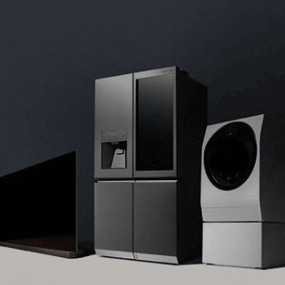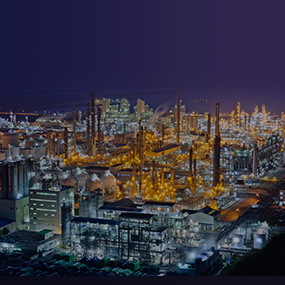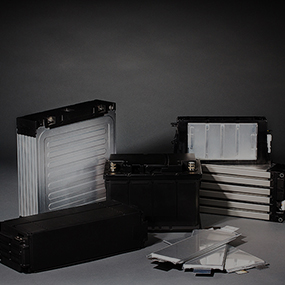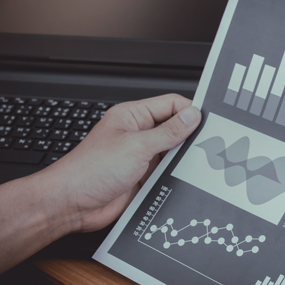Turning waste plastics into resources: LG Chem-Sampyo Cement-Hyundai Rotem and more to join hands
2022.07.05■ On the 30th, LG Chem-Sampyo Cement-Hyundai Rotem-Korea Engineers Alliance-Korea Cement Association sign an MOU to establish an ecosystem with a virtuous cycle of converting waste plastics into resources
■ Using waste plastic byproducts for cement calcination process. To localize the materials, the companies attempt to develop fertilizers and semiconductor cleaning materials that are entirely dependent on imports
□ LG Chem: supports technology used to convert waste plastics into resources, develop high value-added products such as fertilizer ingredients
□ Sampyo Cement: increases the use of waste plastics as an alternative fuel to bituminous coal, promotes zero waste landfill
□ Hyundai Rotem: establishes a production facility that uses byproducts during cement manufacturing
□ Korea engineer Alliance: proposes and advertises effective policies to facilitate resource circulation
□ Korea Cement Association: expands a platform of converting waste plastics into resources to the entire Korean cement industry
LG Chem will join hands with Sampyo Cement and other partners in the engineering industry to build an ecosystem of virtuous resource cycle that uses waste plastics.
On the 30th, LG Chem announced that it signed an MOU with Sampyo Cement-Hyundai Rotem-Korea Engineers Alliance-Korea Cement Association regarding “Establishing an ecosystem of virtuous resource cycle by using waste plastics as alternative fuels to produce cement”
Through the MOU, it is expected that byproducts from waste plastic incineration can be converted into raw materials for high value-added products. As of now, most cement companies use bituminous coal as its primary raw material. In recent days, waste plastics are gaining momentum as an alternative fuel as it contains high biomass and solves waste issues.
When waste plastics are burned, chlorine dusts are produced as byproducts. Chlorine dusts is classified as waste and difficult to recycle, therefore relying mainly on landfill. It comes with environmental burden and costs. The chlorine components hamper with the movement of raw materials as they get attached to the inner wall of cement preheater, thereby reducing facility utilization. The companies including LG Chem, Sampyo Cement, and Hyundai Rotem joined their hands to overcome the limits of existing processing technology on recycling chlorine dust.
Per MOU, Hyundai Rotem will convert chlorine dust into potassium chloride(KCI) by applying conversion technology that it secured through its collaboration with Anytech Co., Ltd, a company that specializes in environmental facilities. The conversion technology will use carbon dioxide emitted during cement manufacturing processes so that it not only reduces greenhouse gas but resolves chlorine’s attachment issues to increase the stability of cement manufacturing facility. Hyundai plans to supply chlorine dust processing facilities and potassium chloride production lines at Sampyo Cement’s Samcheok factory.
By grafting chemical and physical technologies, LG Chem will support process technology that prevents chlorine from getting attached to the inner wall of heating furnace. The company will also provide technology to enhance stability of a facility that converts chlorine dusts into resources. By increasing the purity of potassium chloride that is produced through conversion process that turns it into a resource, the company plans to produce and localize high value-added products including potassium hydroxide (KOH) and potassium carbonate (K2CO3) that serve as raw materials for semiconductor washing materials. Potassium chloride, a raw material for KOH and K2CO3, is entirely dependent on imports as it is facing difficulties in localized manufacturing.
Sampyo Cement will actively use waste plastics as an alternative fuel to bituminous coal. The company will also promote zero waste landfill by optimizing both mineralization process of carbon dioxide and chlorine dust emitted from cement manufacturing process and operations of evaporative concentration process to produce potassium chloride.
Korea Engineers Alliance will propose effective policies to central and local governments as well as public institutions to facilitate resource circulation. Through lectures and such, the alliance will continue to promote the importance and necessity of resource circulation.
Korea Cement Association will expand its new platform of converting waste plastics into resources to the entire Korean cement industry. By advising the government on policies, it will seek improvements in various regulations that hinder the creation of new businesses.
Lee Ho Woo, Vice President and Group Leader of the Sustainability at LG Chem, said “By aggregating strengths of each company, we plan to build a variety of business models alongside our partners in converting waste plastics into resources.”
Lee Jong Seok, CEO of Sampyo Cement said “With an eco-friendly process in place by collaborating with top experts in the field, we will reduce both greenhouse gas and manufacturing cost.”
Oh Joon Seok, Vice President of Eco Plant Business at Hyundai Rotem, said “We expect to secure the foundation to reinforce ESG management including an establishment of ecosystem with virtuous resource circulation and carbon reduction by applying the technology that converts chlorine dust into resources.”
Kang Tae Jin, President of Korea Engineers Alliance, mentioned that “Our alliance will contribute to the development and settlement of necessary technology to convert waste plastics into nature-friendly environment energy so that it can be used as an alternative to coals. Mr. Kang added “By doing so, we will lead the effort in reducing the amount of coal imports by 5 million tons annually to cut greenhouse gas and achieve carbon neutrality.”
Lee Hyun Jun, Vice Chairman of Korea Cement Association said “This MOU will resolve the issue of processing chlorine dust that has been hampering the effort to convert waste plastics into fuels. Mr. Lee added “As there’s a wider public understanding on the necessity and safety of recycling circulated resources, I’m confident that it will great contribute to forming a solid foundation of carbon neutrality.”














